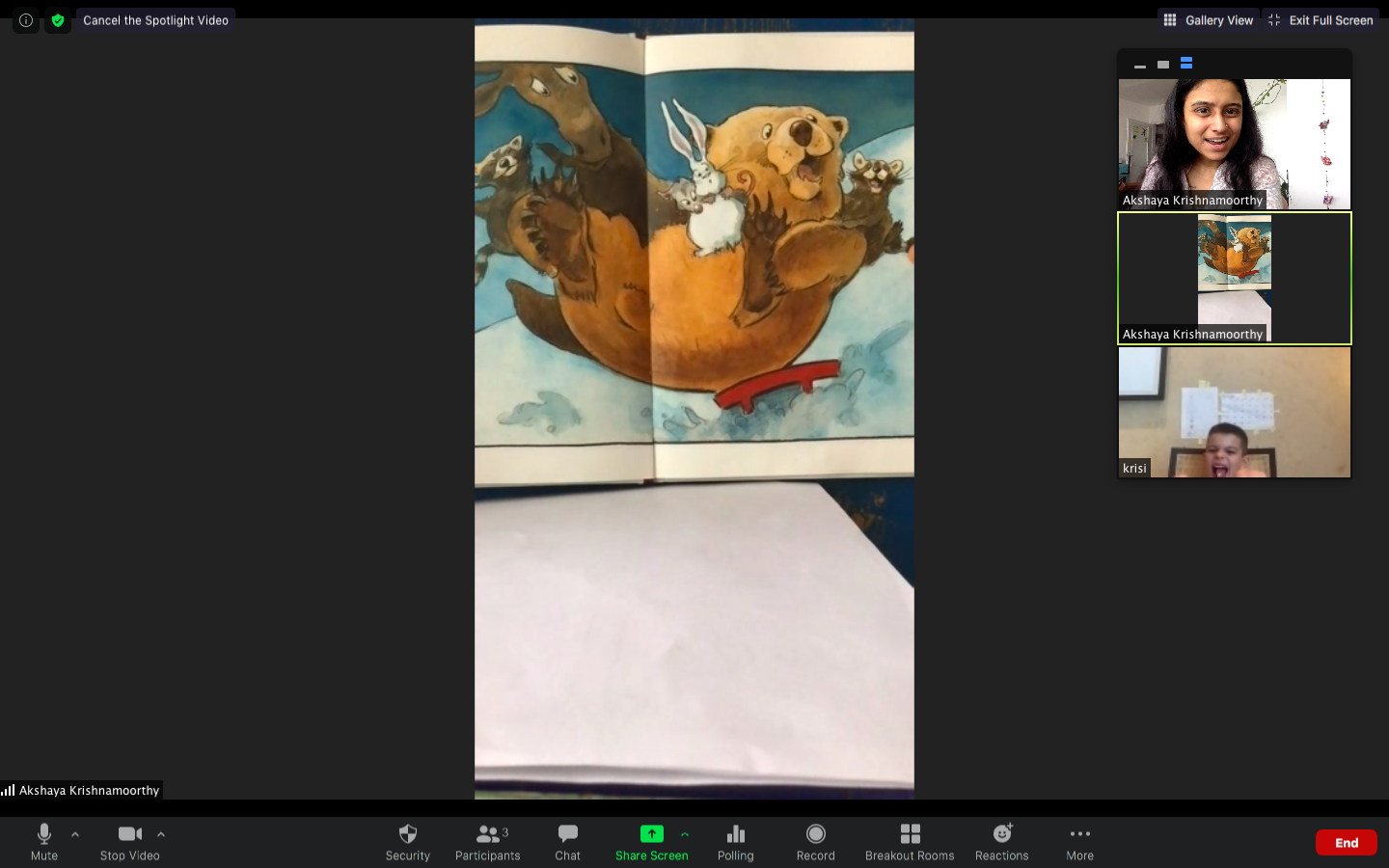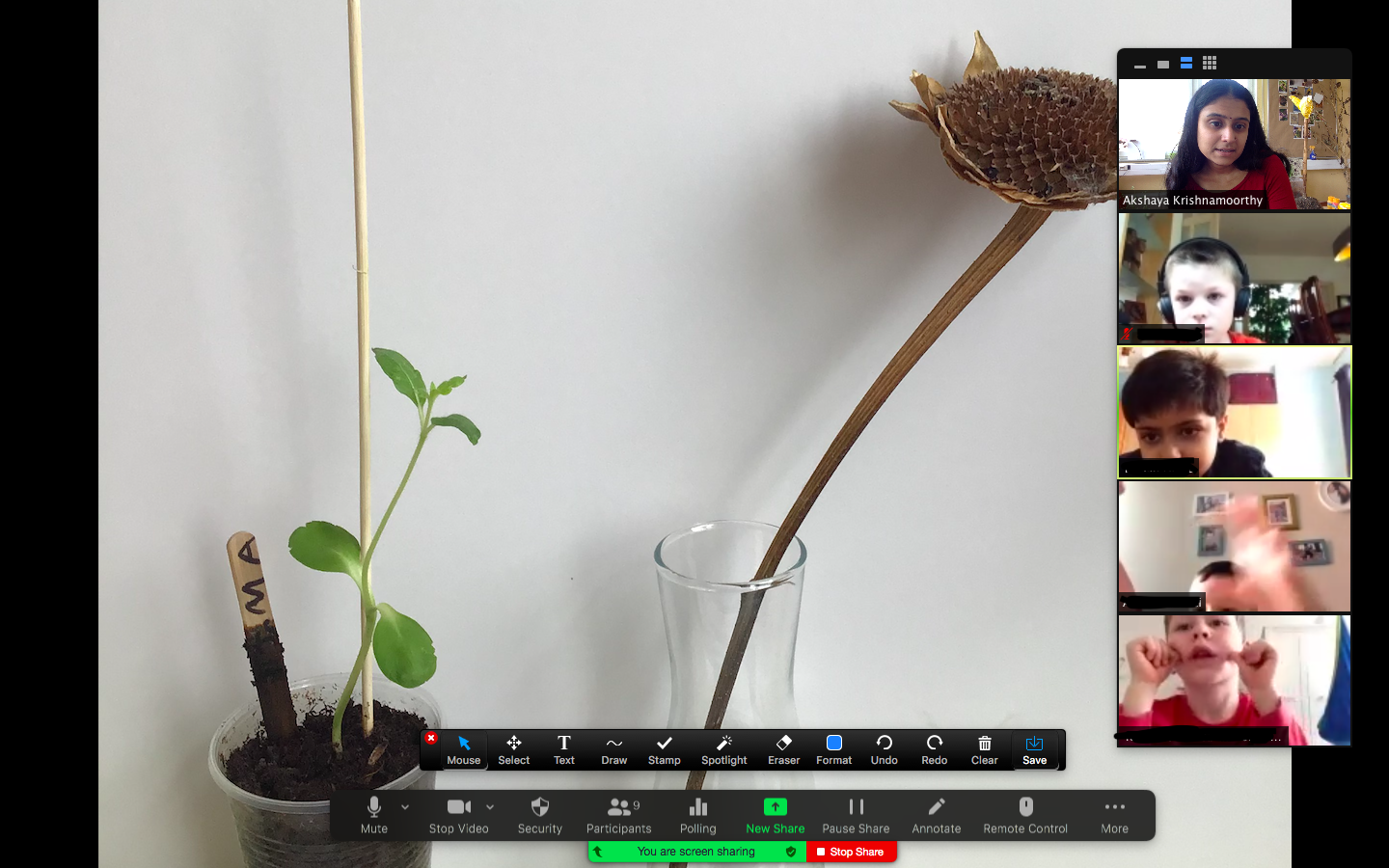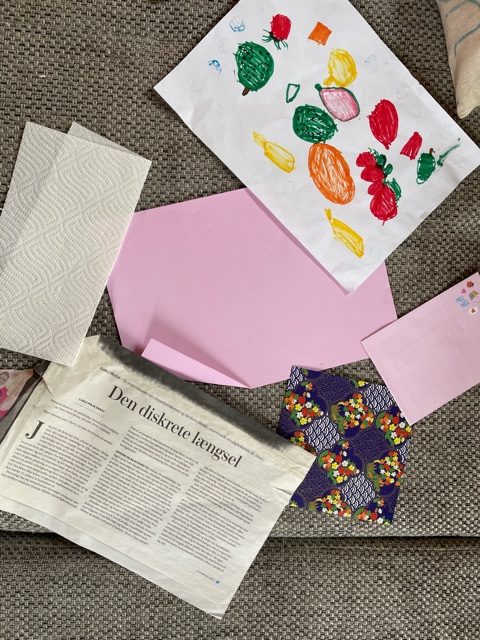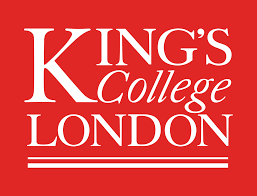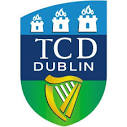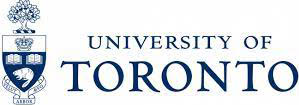Curious about Early Childhood Foundations at the International School of Prague?
Join our Early Childhood Foundations (25 March) Virtual Open Day at 12 noon. For more information and to register visit here.
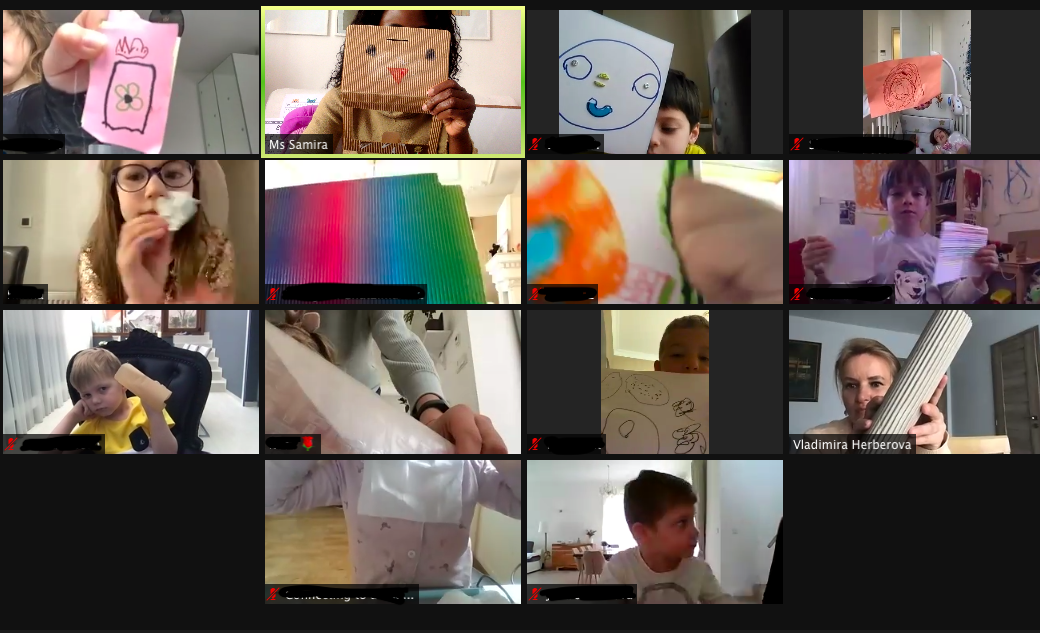
Early Childhood Foundations and Elementary School children continue to be highly engaged in learning online, even after a year of toggling back and forth between being onsite and online. As we spent time in lessons this week, we were overwhelmed by teachers’ creative use of technology and a wide variety of learning resources. The ways in which teachers used all the tools at their disposal drew on children’s curiosity, as well as made the tasks relevant to them as learners.

The snapshots of learning below provide a picture of what your children are experiencing and how opportunities for learning are carefully crafted by our amazing teachers.
Learning is engaging when teachers use different provocations and tools to hook children’s curiosity and connect to real life.
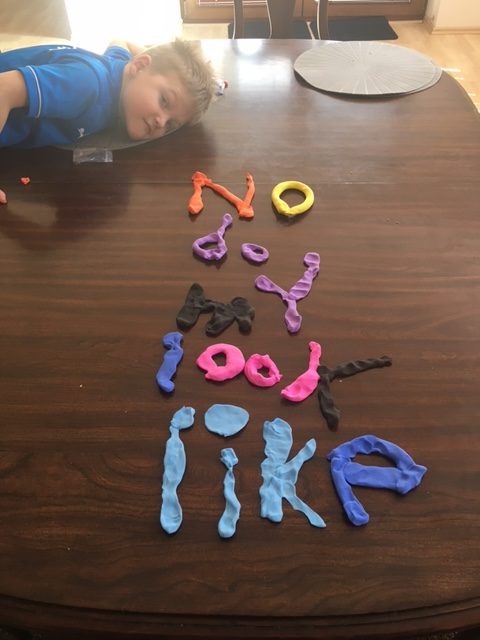
In ECF 5 children work in small groups with the teachers, the learning tailored to meet the individual needs of the children. Working in small groups at this age is also particularly important because the teachers can focus on each child and engage them even in Distance Learning. In this lesson, children were practicing “snap words”, the words children learn to read automatically by sight. The teacher created a sense of mystery by giving the children clues about the characteristics of each word and the children had fun guessing which word it might be. For example, “Which word looks like it has two ‘eyes’? Do you know?
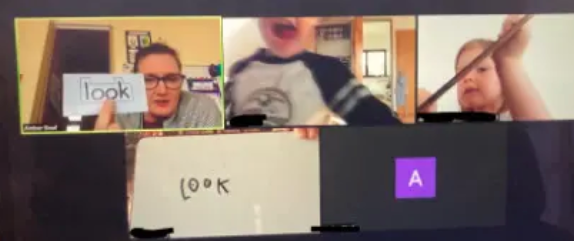
Here you see Ms. Amber holding up the word ‘look’ after the children have guessed. They then write the word on their own whiteboards at home and hold it up for everyone to see. This child announced excitedly, “See, ‘look’ has two eyes!’ and points to how he made the letter o’s look like eyes. These games with the words help the children remember their snap words and make the learning fun!
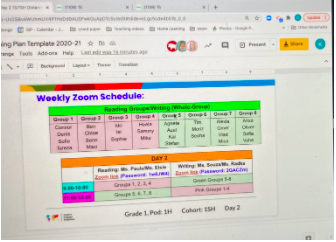
During a Morning Meeting in Grade 1, the teacher started the day by going over the color coded chart of the schedule for the day. This information was very relevant to the children as they needed this information to be able to manage their own schedules, when they had to be on zoom and where they had to go on zoom. There was lively discussion as they verified their understanding and prepared their materials.
The teacher then shared a video of a science experiment entitled, “OMG”, done by one of the children in the class. In the video, their classmate showed them a plastic bag full of water with pencils stuck in the bag ~ and no water coming out through the holes! The rest of the class was entranced by what they saw and begged to watch it again. The Morning Meeting ended with all the children chattering about how they were going to try this same experiment at home!

In Grade 5 students continued to learn about water scarcity this week and began to think about ways in which they could use less water by considering their own water footprint. In the lesson observed, they started with the question, “How much water are we wearing?” and watched a short BBC documentary, Stacey Dooley Investigates: “How much water goes into the cotton clothes we buy?” The teacher then shared a series of slides with data and visualizations of water usage. The video and data piqued the children’s interest and made them think about their own use of water.
The children’s questions in response to this information were evidence of their curiosity and interest in the data: “How much does the water cost that’s used to make the clothing?” “ Why are clothes so cheap given the cost of water?” “ Could you use dirty water to make clothing?” One of the girls stated that we buy more than we need and that we should think before we just buy more. Another student suggested we should pass clothes on to others when they no longer fit and use hand-me-downs. The children then went on to read the ebook, Your Water Footprint, a resource that would help them evaluate their own water consumption.
Learning is engaging when teachers use a variety of different resources and methods as well as technology tools.
In EAL, Mrs. Erni supports Distance Learning from her classroom where she uses many different resources to support children’s language learning. In this lesson, Grade 3 children acquire vocabulary as they learn about character traits. Mrs. Erni is in her zoom room with all the children and has prepared slides to guide the lesson. As the children suggested words to describe the big bad wolf in the tale, The Three Little Pigs, Mrs. Erni wrote the words the children suggested on cards and posted them on the whiteboard which the children could see behind her. You can also see many, many different resources spread out on the tables in the classroom. Mrs. Erni prepares the resources in advance and uses these to support the children’s language learning.

In Grade 1 lessons observed, the children were highly engaged in thinking like mathematicians. In one zoom room, I heard excited children’s voices clammering to share their thinking, calling out “Mr. James, Mr. James, look!!”, as they pressed their faces to their screens. In another zoom lesson the children were carefully explaining their mathematical thinking to Ms. Paula as she moved the base-10 blocks on the screen. An advantage of being online is that the children have to clearly explain their thinking in ways they might not have to if they are in person moving the base-10 blocks themselves! In another zoom room, the children were playing a guessing game using a number chart. One student chose a number between 40 and 60 and the other children had to figure out what number it was by asking questions, “Is it greater than? Is it less than”, until they thought they knew the number. In all these examples, the children saw materials that were familiar to them as they use these resources all the time when they are at school. The teachers’ facilitation of learning using these visual resources online support the children’s mathematical thinking and learning.

In Modern Language classes, the teachers use a variety of online tools to support children in producing the target language. In a beginning Czech class the children had a choice of two different ways to practice the months of the year. In an advanced Spanish class, children created complete sentences using phrases to express what they like and don’t like to do. This activity required the children to use a wide range of vocabulary and to speak in complete sentences, which the teacher recorded on a shared document that all could see. Finally, in German the students had to ask a question about the pictures on the screen and then answer them as well, already using simple complete sentences at a beginning level. In all three lessons the children were highly motivated and engaged, collaborating with one another as they used the visuals designed to facilitate their language production.

